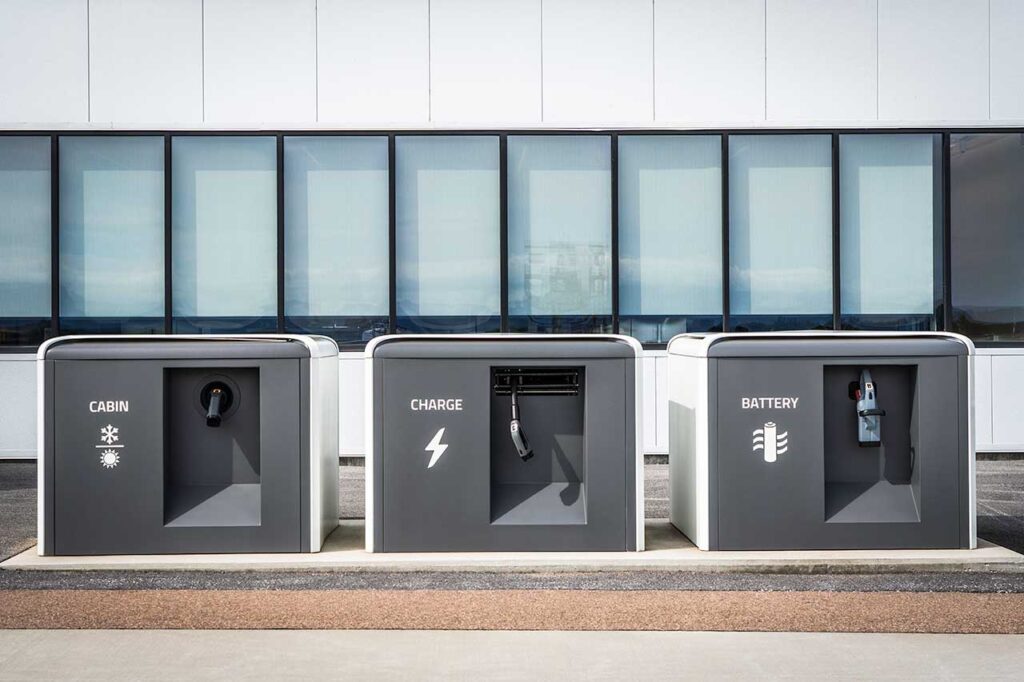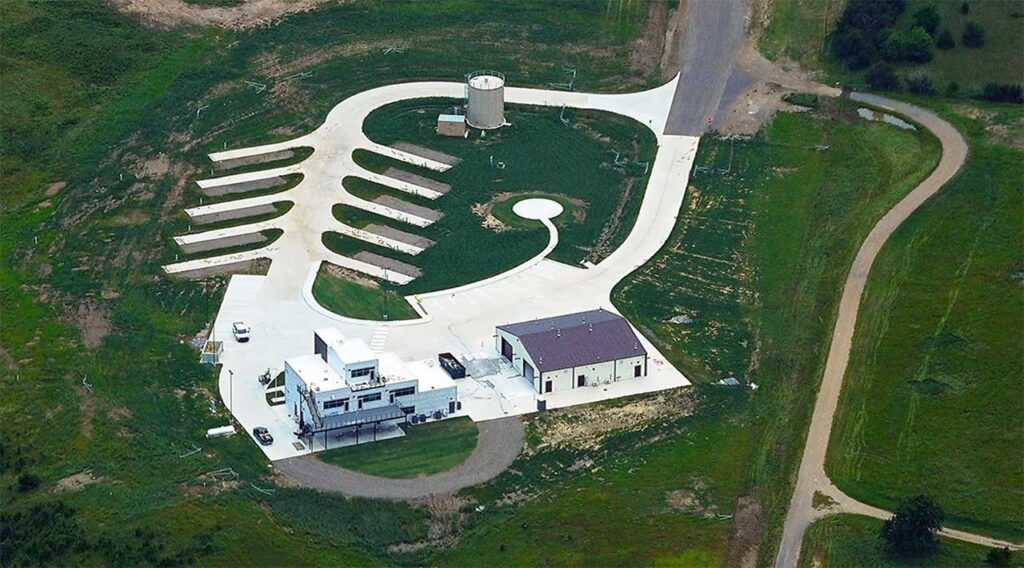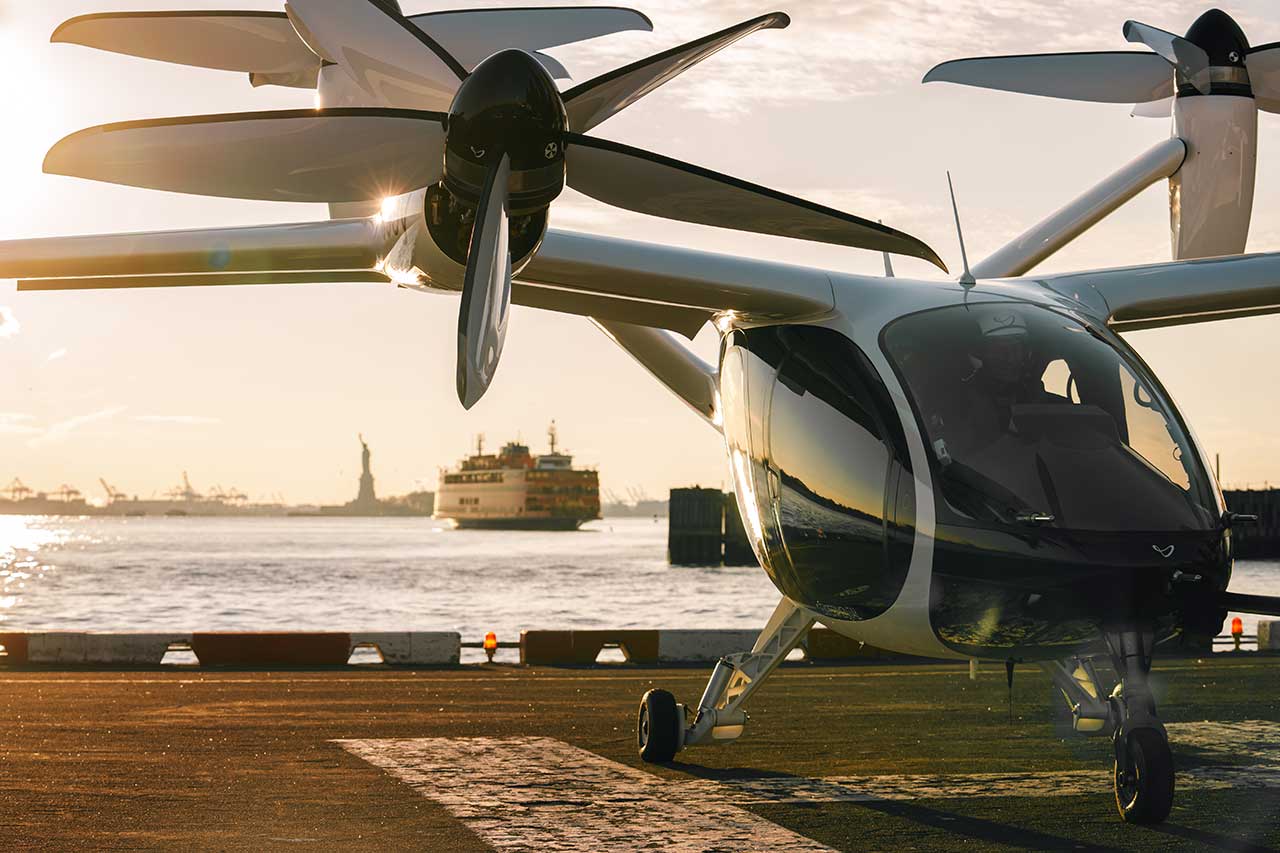We were promised flying cars decades ago. We read books like Dude, Where’s my Flying Car? by Tim Jackson. We were mesmerized by the electrical vertical takeoff and landing (eVTOL) aircraft in movies like Blade Runner. Recently, we watched YouTube videos showcasing EHang in China flying its fully autonomous EH 216-S aircraft in China, with smiling passengers onboard taking selfies.
Until now, we’ve had to look outside our country’s borders to see advanced air mobility (AAM) take flight. But the June 6, 2025, Executive Order (EO), entitled Unleashing American Drone Dominance promises to pave the way for AAM and eVTOL aircraft. Among other things, it directs the creation of the eVTOL Integration Pilot Program (eIPP). Read on to learn where we’ve been, where we are presently, who might be in the running for the eIPP and where it all may take us in the future.
Where’s My Air Taxi?
The AAM road has been long. Although we’ve seen many milestones achieved along the way, we are just “not there yet.”
- Since 2009, Joby Aviation has been refining its aircraft, the S4, and is almost done with the fifth stage of FAA aircraft type certification.
- Since 2017, Beta Technologies has been perfecting its aircraft, the ALIA-250, and it expects FAA certification in 2026.
- Since 2018, Archer Aviation has been refining its aircraft, Midnight, and is almost done with the fourth or five stages of FAA aircraft type certification.
In 2023, the FAA, released its Innovate 28, or Advanced Air Mobility (AAM) Implementation Plan, with the goal of having eVTOLs in the skies by 2028 in time for the Los Angeles Olympic Games.
Yet we’ve had to standby and watch in awe as other countries, like the United Arab Emirates, have broken ground on vertiports, and set up partnerships with both Archer and Joby to begin AAM service soon.
But the times, as they say, “are a changing.” In a way, it seems to be a bit like back to the future.

History Repeats
Any discussion of the latest EO and the eIPP, merits a look back in time. In early 2012, when unmanned aircraft systems (UAS) were just starting to fly in our airspace, the U.S. lacked a framework for commercial flight. Under the FAA Modernization and Reform Act (FMRA) of 2012, we operated under Section 333 Exemptions. These were burdensome, time consuming, and unwieldy tools for even the simplest of operations. It wasn’t till 2016, when we finally witnessed the birth of 14 CFR Part 107, that the industry started to gain traction.
Then on October 25, 2017, during President Trump’s first term, he issued a Presidential Memo to the Secretary of Transportation which lit a fire within the UAS industry. In that memo, the President declared that it was the policy of the U.S. to promote the safe operation of UAS and enable the development of UAS technologies for use in agriculture, commerce, emergency management, human transportation and other sectors. Importantly, this 2017 memo created the UAS Integration Pilot Program (IPP).
The UAS IPP
The UAS IPP aimed to test the further integration of UAS into the national airspace system (NAS) in a select number of State, local, and tribal jurisdictions. Its objectives were to:
- Test and evaluate various models of State, local, and tribal government involvement in the development and enforcement of Federal regulations for UAS operations;
- Encourage UAS owners and operators to develop and safely test new and innovative UAS concepts of operations; and
- Inform the development of future Federal guidelines and regulatory decisions on UAS operations nationwide.
At its onset, the IPP was slated as just a three-year test bed. After an initial vetting period for applicants, its cadre ended up including ten lead participants which shortly became nine. They evaluated a host of operational concepts, including night operations, flights over people, and beyond the visual line of sight (BVLOS) operations, package delivery, detect-and-avoid (DAA) technologies and the reliability and security of data links between pilot and aircraft.
The BEYOND Program
At the conclusion of the UAS IPP, and to continue work on the remaining challenges of UAS integration, the FAA launched a new program called BEYOND. It began on October 26, 2020, as a four-year initiative, with eight of the original nine lead IPP participants.
BEYOND focused on moving toward operating under established rules rather than waivers, collecting data to develop performance-based standards, collecting and addressing community feedback, understanding the potential and realized societal, economic and community benefits of drone use, and streamlining the approval processes for drone integration.
Phase 1 of the program concluded last year. Over its course, participants in this first phase achieved 70,563 total flights; 48,383 of those flights were BVLOS. BEYOND Phase 2 began this year. The FAA Reauthorization Act of 2024 established this second phase of the program and extended it until 2029.
Unleashing The eVTOL IPP (eIPP)
The June EO promises to pave the way for AAM and eVTOL aircraft in much the same way as the 2017 Presidential Memo did for UAS. Here’s a quick recap of its relevant provisions.
It directs the Secretary of Transportation (SecTrans), acting through the FAA Administrator, and in coordination with the Director of the Office of Science and Technology Policy (OSTP) to establish the eVTOL Integration Pilot Program (eIPP) as an extension of the BEYOND program to accelerate the deployment of safe and lawful eVTOL operations in the U.S.
Importantly, the SecTrans, in consultation with the Director of OSTP, may expand the eIPP to include other advanced aviation aircraft as warranted (think: eSTOL, eCTOL, hybrid hydrogen aircraft and more!).
The pace of the eIPP will be much like that of the UAS IPP, except with only five pilot projects as opposed to ten. Also like the original UAS IPP, the eIPP shall conclude three years after the date the first pilot project becomes operational—unless the SecTrans determines that an extension is warranted in the national interest. Also similar to the UAS IPP, before and after the conclusion of the eIPP, the SecTrans shall use the information and experience yielded by the eIPP to inform the development of regulations, initiatives, and plans to enable safe eVTOL operations and share that with heads of other relevant agencies.
Here are some key dates and timelines:
- September 4, 2025: By this date, we should expect the FAA to issue a public request for proposals to State, local, tribal, and territorial (SLTT) governments to participate in the eIPP.
- + 90 Days (NLT December 2025): Proposals must be submitted within 90 days of the FAA request (which has a September 4th deadline) so keep an eye out for the exact date of this second deadline. Proposals must include a private sector partner with demonstrated experience in eVTOL aircraft development, manufacturing and operations (think: Archer, Joby, and Beta, to name a few.)
Selection criteria shall include, at a minimum, the use of eVTOL aircraft and technologies developed or offered by a U.S.-based entity; overall representation of economic and geographic operations and proposed models of public-private partnership; and overall representation of the operations to be conducted, including advanced air mobility, medical response, cargo transport, and rural access.
- + 180 days (NLT March 2026): Within 180 days from the FAA request, the FAA should have selected at least five pilot projects that plan to begin eVTOL operations. Agreements with selected applicants will outline project goals, regulatory needs, timelines, information sharing and data exchange mechanisms, and responsibilities.
- + Another 90 Days: 90 days after the date on which any agreement for a pilot project is established, operations should begin.
- + 180 Another Days: After the selection of pilot program participants, the SecTrans shall submit an initial implementation report to the President through the Director of OSTP, summarizing early-stage planning, interagency coordination, and any immediate regulatory or legislative challenges identified.
- Annually: The SecTrans shall submit an annual report thereafter and, upon program completion, shall submit a final report to the President, through the Director of OSTP, that includes, at a minimum, an evaluation of program goals and outcomes; recommendations for the permanent integration of eVTOL operations into the national airspace; and any proposed future initiatives to maintain U.S. leadership in eVTOL flight.

Which States Will Win The eIPP Prize?
Expect competition for the eIPP to be fierce for these first five projects. A few characteristics may make the difference, such as whether or not the state already has favorable laws or regulations addressing eVTOLs and vertiports, AAM roadmaps, state AAM contract programs or incentives, established AAM committees, eVTOL infrastructure (think: chargers) or locations where airlines have already partnered with eVTOL companies on specific location routes. (And, of course, it goes without saying, current BEYOND program participants, may in general, have a “leg up” too).
States With Vertiport/eVTOL Laws or Regulations
States that already have regulations in place for vertiports and flying cars could be strong contenders among the first five.
- Florida: The Orlando City Code features Sec. 66.200. – Definitions., Sec. 58.850. – Design and Specification of Vertiports., Sec. 58.851. – Standards for the Approval of Vertiports., Sec. 58.852. – Procedural Requirements., and Sec. 58.853. – Submittals.
- Illinois: The Chicago Municipal Code features Zoning Ordinances 17-8-0500 Mandatory planned development thresholds., 17-8-0913 Heliports, Helistops or Vertiports., 17-17-0267.3 Vertiport, and 4-83-010 Definitions.
- New Hampshire: When New Hampshire Governor Chris Sununu signed HB 1182 into law July 24, 2020, the Granite State became the first in the nation to create a legal framework for flying cars, affectionately called the Jetsons Law.
- Texas: In 2023, SB. 2144 reactivated the prior session’s advisory committee and renamed it the AAM Advisory Committee to better suit the technology’s applicability in both urban, suburban, and rural areas of the state. The bill also tasked the Texas Department of Transportation (TxDOT) with developing a statewide plan to assess critical infrastructure and provide resources and assistance on the use of AAM technology and infrastructure to interested parties. S.B. 2144 also tasked TxDOT, the Texas Education Agency, and the Texas Higher Education Coordinating Board with collaborating with stakeholders on AAM educational opportunities.The City of Dallas also has created a definition for a vertiport (SEC. 5-1. DEFINITIONS.).
- Utah: Salt Lake City has created a definition for an Advanced Aircraft Mobility System (16.10.010: DEFINITIONS).
States With AAM Roadmaps
Having a clear policy, or roadmap to guide future endeavors is also beneficial to the AAM industry. This could also set up the state to be a strong contender.
- Arkansas: In February 2023, Arkansas leaders made the bold claim to become the global leader in next generation transportation by 2030 when they shared their roadmap.
- Florida: In 2024, Florida Department of Transportation Aviation Office published their Advanced Air Mobility Land Use Compatibility and Site Approval Guidebook. This guidebook provides local governments with a background on AAM, the land use considerations for vertiport development, proactive planning steps to prepare for AAM, and a step-by-step process for vertiport site approval at the local, federal, and state level.
- Georgia: Georgia Department of Transportation has AAM blueprints for their State.
- Illinois: To prepare for the anticipated growth in AAM, the Illinois Department of Transportation commissioned the Illinois AAM System Plan. This plan will encompass several key components, including defining the existing aviation system that can support AAM infrastructure or vertiport, establishing a system vision and associated goals that align with the state’s Long Range Transportation Plan (LRTP), and developing an implementation and policy framework of AAM integration into the State’s transportation network.
- Minnesota: The State published an Air Mobility Strategic Plan.
- Texas: In 2025, U.S. Transportation Secretary Sean P. Duffy and U.S. Sen. Ted Cruz announced Texas A&M would lead the Center for Advanced Aviation Technologies.
- Washington: In 2025, the Washington State Department of Transportation (WSDOT) released a Vertiport Land Use Compatibility Supplement, offering planners and policymakers a detailed roadmap for integrating vertiports into cities. The guide responds to a growing need for updated zoning tools that account for the unique characteristics of electric Vertical Takeoff and Landing (eVTOL) aircraft. According to WSDOT, current zoning regulations, largely built around conventional airports and helipads, fall short in accommodating the safety, noise, and aerodynamic profiles of eVTOLs.
Government Contracts
Awarding government contracts to spur innovation is key to preparing the infrastructure to handle AAM aircraft. Based on this criteria, these states could be in the mix.
- Alaska: Alaska Department of Transportation & Public Facilities (DOT&PF) is working to improve Alaska aviation safety record by leveraging new and emerging technologies, by creating an AAM project to address safety concerns highlighted by the 2022 National Transportation Safety Board (NTSB) analysis of Alaska’s airspace. The AAM contract, awarded to Collins Aerospace (an RTX business), addresses current challenges facing Alaska, including the lack of adequate weather observing stations, webcam services, accurate aircraft surveillance, Global Positioning System (GPS) resiliency, aeronautical charting, and communications.
- California: In 2025, the County of Ventura’s Economic Vitality Unit, in partnership with the Department of Airports and key regional partners, was awarded $550,000 to establish an Advanced Air Mobility Innovation Center.
- North Carolina: In 2024, North Carolina received a $500,000 grant from the Appalachian Regional Initiative for Stronger Economies (ARISE) to research aviation improvements in the western part of the state. According to the state Department of Transportation, there are 13 general aviation airports in Western North Carolina that are limited by outdated infrastructure, and the research—to be conducted by North Carolina State University—will prepare a roadmap to ensure that those airports are AAM-ready.
- Oklahoma: In 2025, the Oklahoma Department of Aerospace and (ODAA) completed the selection process and executed a contract for the state’s first investment in an airspace management system and automatic detect-and-avoid solution to support both drone flights and the rapidly emerging Advanced Air Mobility (AAM) industry.
- Virginia: In 2024, to prepare the 65 public-use airports in Virginia for the arrival of AAM vehicles, the Virginia Aviation Board (VAB) and the Virginia Department of Aviation (DOAV) made funding available to support bringing 3-phase electrical power and broadband connectivity to these airports. Having 3-phase power and broadband connectivity at all airports in Virginia is vital to the operations of AAM service providers. Three-phase electricity enables providers to recharge the batteries that supply power to the aircraft, and broadband connectivity enables command, control and communication features that enhance the safe operation of these aircraft. The board’s action made up to $200,000 available to each airport that is interested in improving its readiness for the launch of AAM services.
AAM Committees
Even establishing a committee to study AAM in your State would also presumably be helpful.
- Arizona: In 2021, an act established the Urban Air Mobility study committee. They met and reported their findings in 2022.
- California: In 2023, an act established the Advanced Air Mobility and Aviation Electrification Committee.
- Maryland: The State established a statewide Advanced Air Mobility Council.
eVTOL Infrastructure
Where would an eVTOL be without its charging station? Following the age-old adage of “build it and they will come,” several charging stations have popped up across the country. It is noteworthy that Beta has a map showing 46 charging stations across 22 states in the U.S.
- Alabama: Montgomery Regional Airport (MGM) has partnered with Beta Technologies, an electric aerospace company based in Burlington, Vermont, to install the first-ever electric aircraft charging station in the state of Alabama. Alabama Power also served as a partner to bring these chargers online for public access.
- Maryland: Beta Technologies expanded its network of US electric aircraft chargers in Frederick Municipal Airport (KFDK).
- New Hampshire: Beta Technologies expanded its network of US electric aircraft chargers in Manchester-Boston Regional Airport (KMHT).
- Virginia: Beta Technologies expanded its network of US electric aircraft chargers in Charlottesville-Albemarle Airport (KCHO).
Relatedly, having AAM-focused test facilities or innovation centers would also seem to provide a boost to any eIPP package. The Choctaw Nation of Oklahoma, which has been a lead participant in the FAA’s IPP and BEYOND program, recently opened The Choctaw Nation Emerging Aviation Technology Center, for example.
Airline Partnerships
Another indicator of a prime eIPP location may be those places where airlines have already partnered with eVTOL companies on specific routes. Alaska Airlines and United have both shared their AAM business models. Southwest Airlines signed a memorandum of understanding with Archer Aviation to develop operational concepts for the air taxi network.
Whoever Wins…We All Win
The days of watching from the sidelines seem to be ending. This EO is going to turn up the heat in the AAM industry, in a good way. The launch of the eIPP program will spur people on to create, test and dream, much like the UAS IPP and BEYOND. The eIPP signals not just regulatory progress, but a cultural shift—one where the skies above American cities may soon be filled with the hum of AAM vehicles. With bold policy and coordinated industry effort, the promise of AAM is closer than ever to becoming a reality. The journey ahead will demand collaboration, rigorous testing, and visionary governance, but for the first time in decades, the dream of eVTOL flight in American airspace appears to be finally within reach.
By: Sarah Nilsson

